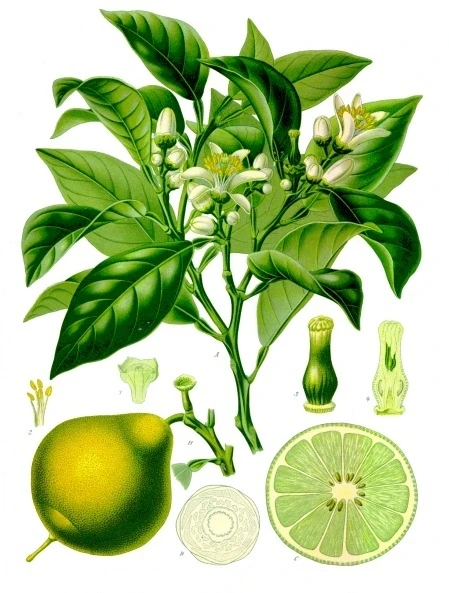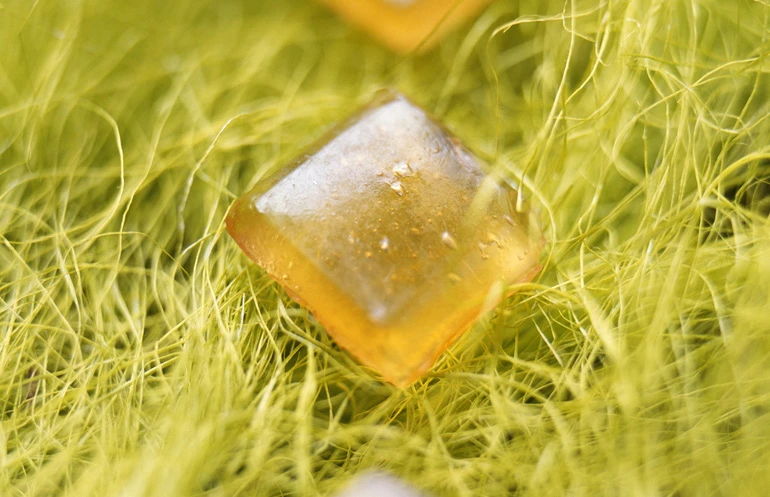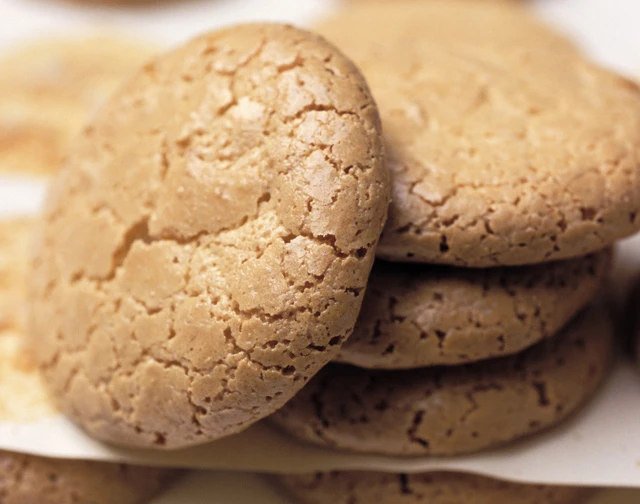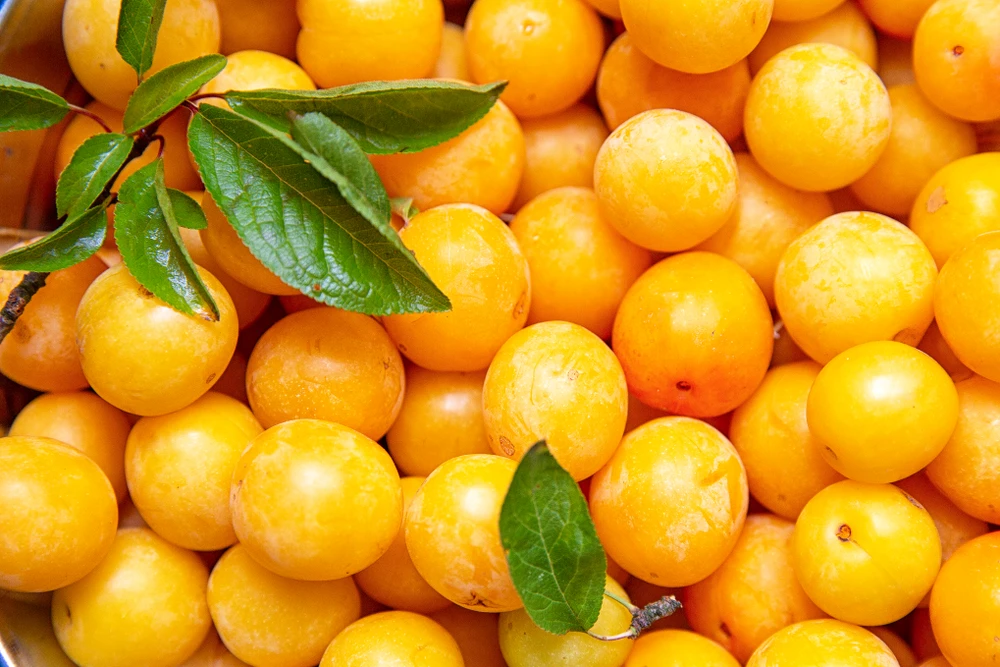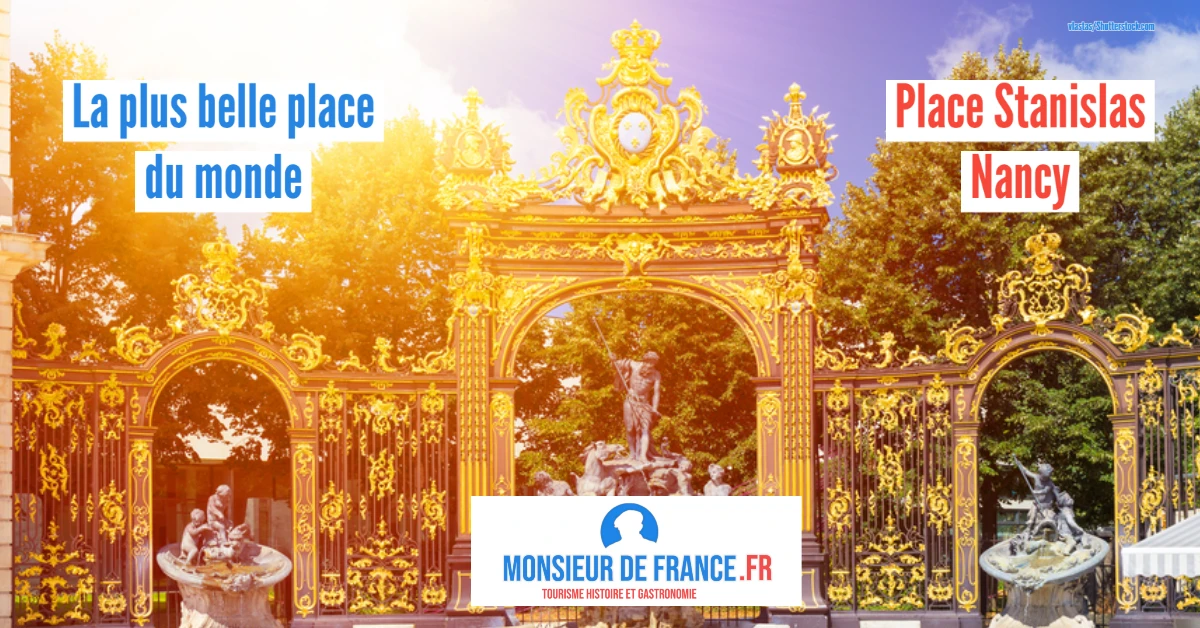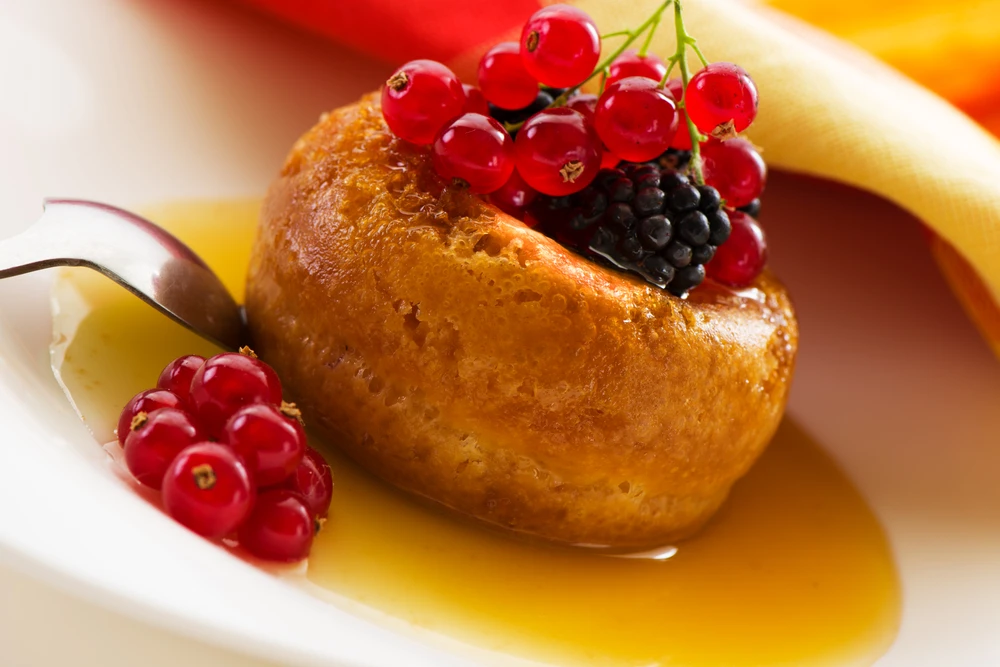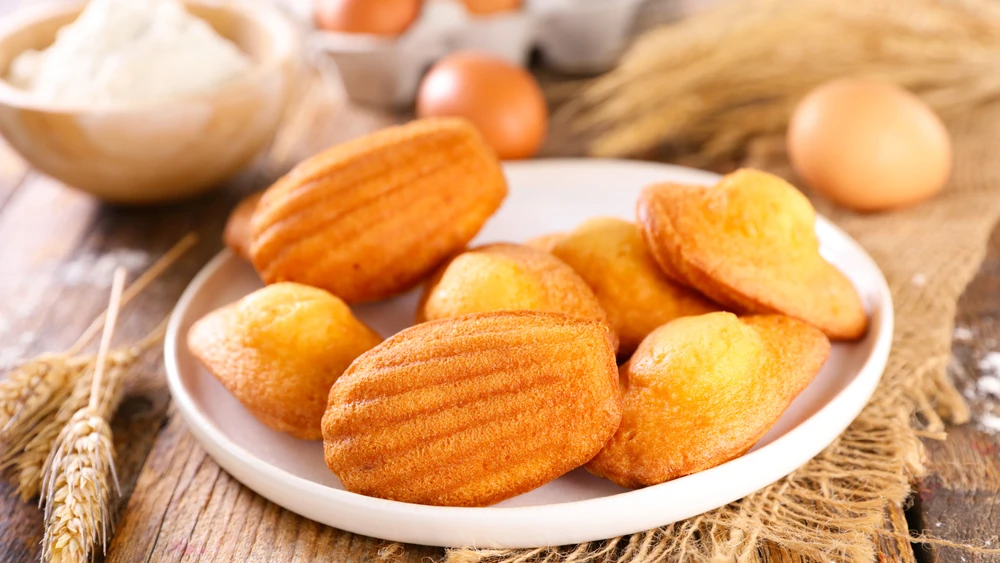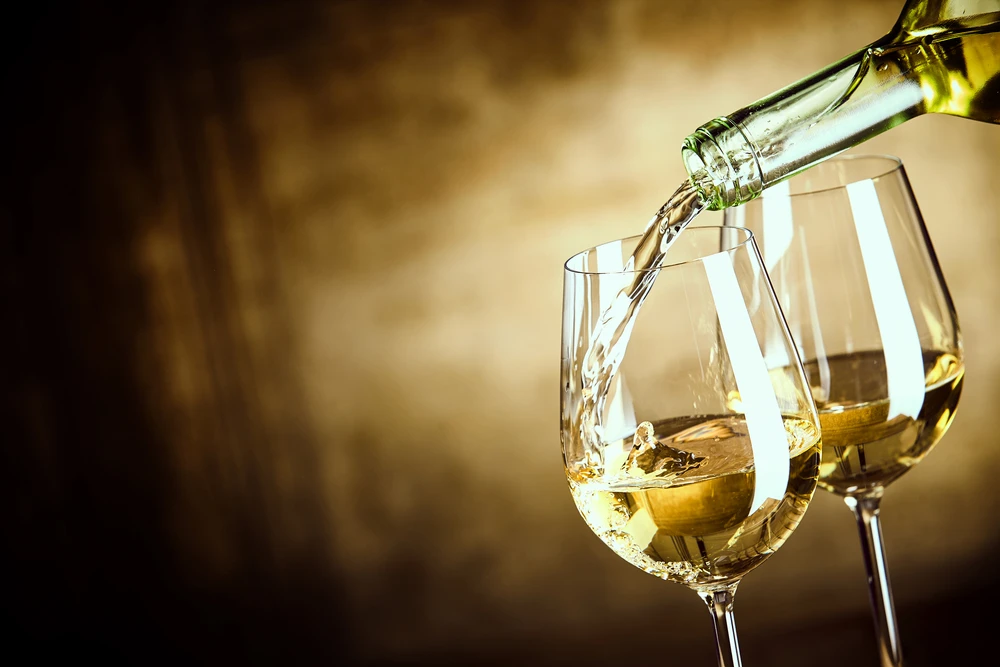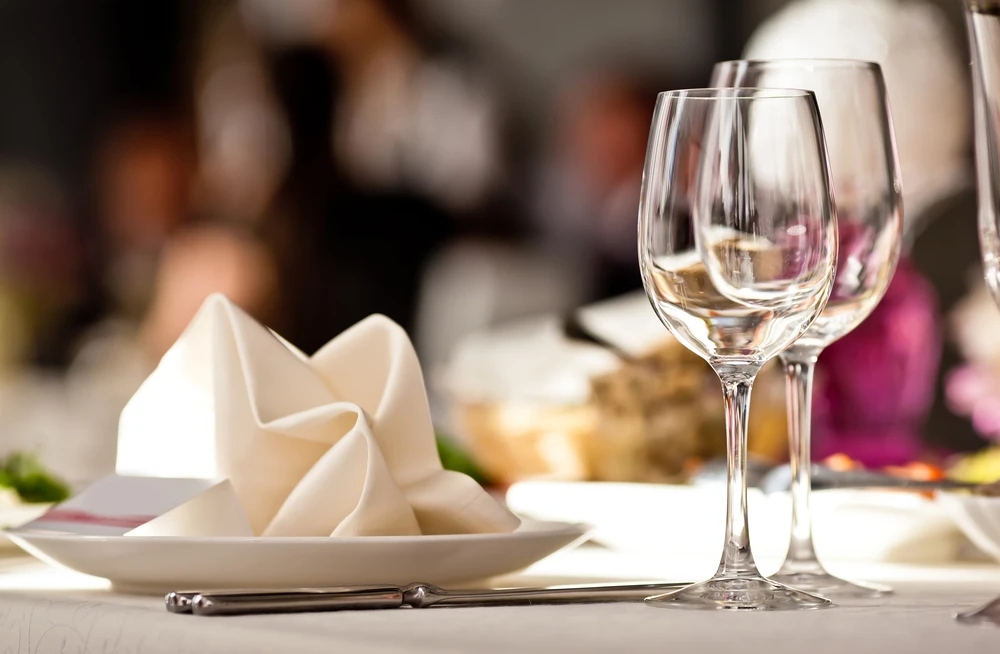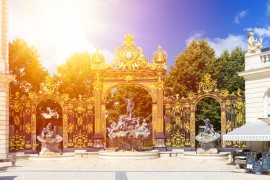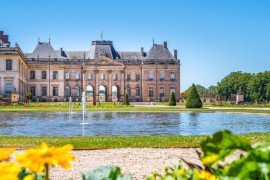Bergamot from Nancy: the sweet gold of the ducal city
Nancy's specialty
We don't really know where they come from, but what is certain is that they are very famous. They even have a Protected Geographical Indication (PGI) certification, which guarantees that you are tasting a genuine bergamot and not just any old sour candy. They are made from sugar with bergamot essence, a fruit that does not grow in Nancy but in Calabria in southern Italy. Some people see the Italian origin of the fruit as the explanation for the birth of Nancy bergamots, since René I, Duke of Lorraine, was also King of Naples.
Bergamots Photo chosen by Monsieurdefrance.fr: Botanical drawing of bergamot on Wikipedia
A somewhat mysterious origin
Others refer instead to the court of Lunéville and the sugar sculptures that were placed on the table for guests to break off pieces to suck on and freshen their breath. Lemon-flavored products were in vogue, and bergamot (found in the very popular Eau de Cologne of the 18th century) was the star of 18th-century perfumes.
A delicious treat to suck on
Bergamots Photo selected by Monsieurdefrance.fr: Foodpictures/shutterstock.com
It was in the 19th century that Nancy bergamots became famous when they were offered in ... Cartridge boxes left over from the 1870 war that were no longer in use. These boxes then became decorative items, attracting collectors. It was the soldiers, who were very numerous in Nancy, who made bergamotes popular in France by bringing them back with them when they returned to their families. Nothing could be more democratic than Nancy bergamotes, as you can suck them, bite them... Or both!
Nancy is a great city for sweets and desserts. Ask for the "Nancy passion sucrée" guide at the tourist office, and we particularly recommend: Maison Lalonde Marché, Rue Saint Dizier in Nancy, or Maison Batt, Rue Saint Georges in Nancy and Rue du Tapis-Vert to see the chocolate shop. Maison des Soeurs Macarons Rue Gambetta in Nancy
Nancy cannot be summed up in a single place or a single flavor; it is a city to be savored neighborhood by neighborhood. Find all my tips and favorites in my itinerary for visiting Nancy.
The Macaron de Nancy: a well-kept secret since 1793
Italian origin
It was the Italians who first came up with the idea of making macaroons—macaroni in Italian—in the Middle Ages, and it was an Italian woman, Catherine de Medici, who brought them with her to France when she married King Henry II. The French loved them so much that many towns began making them (Amiens, Joyeuse, etc.). In Nancy, it is believed that the recipe arrived with Queen Catherine's daughter, Claude of France, wife of Charles III, Duke of Lorraine.
Photo selected by Monsieurdefrance.fr: Claude of France (1547–1575), Duchess of Lorraine, daughter of Catherine de Medici
The "macaron" sisters
Macarons from Nancy Photo selected by Monsieurdefrance.fr: Foodpictures/Shutterstock.com
It was the French Revolution that made Nancy macarons famous. In 1793, at the height of the Revolution, convents and monasteries were closed. This was the case for the Convent of the Ladies of the Holy Sacrament. The nuns strictly observed a rule prohibiting them from eating meat, but allowing them to eat eggs. They did so by mixing them with almond powder in the form of macarons. However, having left their convent and with nothing left, two of the Sisters of the Holy Sacrament went into business to earn a living and began selling macarons from their convent. Marie-Élisabeth Morlot and Marguerite Gaillot made macaroons that were so delicious that they became famous under the nickname "Sisters Macaroon". Their secret recipe has been passed down and is jealously guarded by the Maison des Soeurs Macarons on Rue Gambetta in Nancy.
How about trying to make macarons in the style of Nancy macarons?
The Mirabelle plum of Lorraine: the golden fruit of our orchards
The Golden Fruit
Lorraine produces more than 80% of the world's harvest of mirabelle plums. That's how much this fruit thrives in Lorraine! There are two main varieties: the Nancy mirabelle plum (the largest, ideal for pies) and the Metz mirabelle plum (smaller, ideal for making alcohol). There are many mirabelle plum trees around the Colline de Sion, not far from Nancy, and it is magnificent in March-April when they are all white. Of course, there are mirabelle plum trees elsewhere than in Lorraine, but nothing beats Lorraine mirabelle plums in terms of flavor. It is said that this is due to the soil and the somewhat "extreme" climate, which is very cold in winter and very hot in summer. Note that Lorraine produces a lot of plums, particularly quetches, and there is even a conservatory that collects them in the Meuse. Forty kilometers from Nancy, in Rozelieures, the "Maison de la Mirabelle" (House of Mirabelle Plums) allows you to discover the history and production of these plums and offers a wide range of wonderful related products (from alcohol to perfume and shampoo).
Mirabelle plums from Lorraine / Photo selected by Monsieurdefrance.fr: Shutterstock
Enjoy fresh in summer
It is enjoyed in endless quantities in pies during the harvest month of August. It is also used to make jam (which is available all year round), chutney (delicious with foie gras), and sorbets. If you like white spirits, try it at the end of a meal in a chilled glass. Always choose mirabelle plums with red spots (like freckles) and a small white fuzz called "bloom," which is a sign of freshness.
Quiche Lorraine: the monument of Lorraine gastronomy
The most famous dish from Lorraine
Quiche Lorraine / Image by SGM/Shutterstock.com
It is, apparently, the second best-selling takeaway dish in the world. It must be said that it is simple to make. But like anything that is simple to make in the kitchen, you have to do it right if you want it to be really good. Originally, cheese is not added, and if you do add it, don't tell the purists of the "Confrérie de la Quiche Lorraine" in Dombasle sur Meurthe (25 km from Nancy), but the truth is that we sometimes add it at home.
We recommend the one from Le Foy, on Place Stanislas. Or you can buy some to take away from our butchers (the one from Edouard at Nancy Central Market is excellent).
Discover the authentic recipe for quiche Lorraine.
5 Lorraine pâté
The personal pleasure of the people of Lorraine
It is a specialty that is not very well known outside of Lorraine but is extremely famous in Lorraine: pâté Lorrain. It consists of pork and veal marinated in white wine (preferably from Toul), cut into large pieces and wrapped in puff pastry. It's just delicious as a snack after sports, when you're working early in the morning, and many people in Lorraine make pâté Lorrain with salad on Sunday evenings. Enjoy it with a little green salad—it's truly delicious.
A Lorraine pâté / image selected by Monsieurdefrance.fr / fantomache from Pixabay
Our addresses:
You can find Lorraine pâtés at delicatessens, butchers, and bakeries. You can eat it cold, but it is often enjoyed warm. Just ask. In Nancy, you can find an excellent one at Le Provost on Rue Poincaré. The best is at Charcuterie Philippot in Champigneules (10 km from Nancy, 10 minutes by car and 10 minutes by train), as well as at Maison Bluntzer in Lunéville (20 minutes from Nancy by car or train).
Discover the most beautiful square in the world in Nancy with Monsieurdefrance.fr
Baba au Rhum: a royal legacy from King Stanislas
This fabulous dessert originated at the Château de Lunéville. King Stanislas loved Polish brioche filled with candied fruit. At the end of his life, now elderly (he died at the age of 89) and with weak teeth, he had the idea of pouring wine over his brioche to soften it. As it sank, the brioche reminded him of the traditional dress worn by Polish grandmothers, known as "babas." He got into the habit of doing this with Tokay wine, which was very expensive and which he was the only one allowed to drink, helping himself in a room guarded by Swiss soldiers, hence the French expression "boire en Suisse" (to drink in Switzerland) to describe someone who doesn't share. Taken up by the Parisian Störher, on Rue Mont Orgueil in Paris, the idea of wine was changed in favor of rum, which was less expensive. You can enjoy very good rum babas in Nancy, the capital of King Stanislas.
A rum baba / Photo selected by monsieurdefrance.fr / p.studio66/shutterstock.com
There is even a restaurant dedicated to the king's favorite cuisine (he was a great food lover!) and to Polish and 18th-century recipes. This is a wonderful experience that we highly recommend, which you can enjoy at the restaurant "La table du bon roi Stanislas" on Rue Gustave Simon in Nancy (right next to Place Stanislas).
Madeleines
They were invented nearby, in Commercy (we tell you the story and give you the recipe here), and you can also find delicious ones in Liverdun, near Nancy. It is said that those from Commercy are softer and those from Liverdun are firmer.
Beer from Lorraine
Lorraine is a great brewing region. There are many craft breweries there. In fact, it was because the best breweries were located there that Dr. Pasteur, inventor of the rabies vaccine, stayed in Lorraine to study yeast. Lorraine's excellence in beer is due in particular to the fact that the water there is very good, pure, and low in calcium, which makes it possible to produce excellent beers.
Nothing is more Lorraine than beer / Photo selected by monsieurdefrance.fr: Ground Picture/shutterstock.com
We recommend trying the beers from "Brasseurs de Lorraine" in Pont-à-Mousson (20 minutes from Nancy by car or train). They make everything by hand and create a wide range of flavors, which have earned them numerous national and international awards.
Lorraine wine
Lorraine is an ancient wine-producing region. Before the devastating phylloxera epidemic that ruined French vineyards in the early 20th century, it was covered with vines. It continues to produce excellent wine around Toul, in Moselle, and in Meuse. The wines of Toul (25 km from Nancy, 20 minutes by car, 20 minutes by train) are excellent. You can discover them directly at the winegrowers' estates. The famous "Vin gris de Toul" (ideal with fish, for example, or as a good aperitif) has an Appellation d'Origine Contrôlée (AOC) designation.
To sample some in Nancy, we recommend the wine shop "Les domaines" on Rue Claude Charles behind Nancy City Hall. You can also find the best wines there.
Nothing beats a good wine from Toul / Photo selected by monsieurdefrance.fr: stockcreations/shutterstock.com
Alcohol abuse is dangerous for your health. Please drink responsibly.
And Nancy is the city of restaurants.
It is often said that in Nancy, you can try a different restaurant every day for a year, which is hardly surprising. Whether in the famous "rue gourmande" (gourmet street), which takes its name from its high concentration of restaurants, on Place Vaudémont with its terraces, around the Central Market (towards rue de la Primatiale or rue des Ponts), or on the famous Place Stanislas, you can always find a restaurant that's open. The people of Nancy love to go out and are curious, which means you can find all kinds of flavors here. Don't hesitate to ask passersby, tell them what kind of restaurant you're looking for, and you'll see, they'll be able to find the right place for you.
There is a Facebook group where you can share useful addresses. You can find it here.
Our favorite restaurants
Nancy offers at least one different restaurant every day! / Photo selected by monsieurdefrance.fr: Andrey Bayda/shutterstock.com
"La Maison dans le Parc" gourmet restaurant (1 Michelin star in 2025) run by Charles Coulombeau, a young chef barely 30 years old who is constantly innovating and offers an astonishing menu. It is located on Rue Sainte Catherine, one of the streets leading off Place Stanislas.
Les Pissenlits Rue des Ponts. Traditional French cuisine and Eastern European cuisine (they serve delicious spaetzle). The portions are generous and it's excellent value for money.
"Vins et Tartines" rue des ponts. Original (and large!) tartines served with the perfect wine pairing. Clotilde, the owner, is a sommelier, so trust her and let her guide you. You can also buy a bottle of your favorite wine to take home.
"La Primatiale" is run by Nicolas in a very nice pedestrian street called "rue de la Primatiale" (where you'll find thirty-somethings out on the town at cocktail hour—it's really fun). Nicolas cooks according to his tastes, but always with fresh, high-quality ingredients.
"L'Excelsior" is Nancy's iconic brasserie, offering a wide range of delicious dishes, including the famous "Tout Nancy," which allows you to sample Nancy's sweet specialties in a single dessert. The decor is fabulous, featuring an entirely Art Nouveau style (Majorelle chairs, Daum light fixtures, etc.).
*
If you like cooking
If you've booked an Airbnb, consider doing your shopping at the Marché Central (Place Charles III), Nancy's "belly." You'll find absolutely everything that Lorraine has to offer there. When it comes to cheese, be sure to try Maison Martineau (very discerning) and for meat, the Edouard butcher shop. For fruit and vegetables, we like Huyar Primeur and the "petits paniers" that come at the weekend (you can find mushrooms and even truffles when they're in season). For bread, head to Gwisdak on Rue Raugraff (not far away).
Around Nancy
"Le petit comptoir" on Quai des Petits Bosquets in Lunéville. Located directly opposite the magnificent Château de Lunéville (the residence of Stanislas), this is a traditional restaurant. The cuisine is refined and the terrace is a delight in summer. 20 minutes from Nancy by car or train.
"Le vieux Ciné" in Badonvillers, run by Baptiste Bouché, is a very pleasant traditional restaurant that regularly surprises its regulars, who like to relax there while enjoying the fresh air at Lake Pierre Percée.
"Au vieux moulin" run by two friends, in the heart of the old village of Houdemont (15 minutes from Nancy by car), offering traditional cuisine with a twist that is well worth discovering.
Note: Alcohol abuse is dangerous for your health, please drink responsibly.

